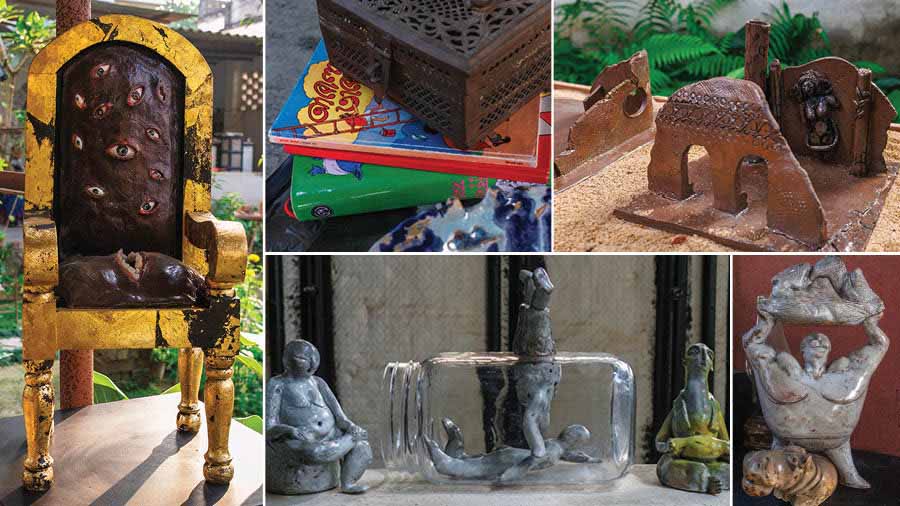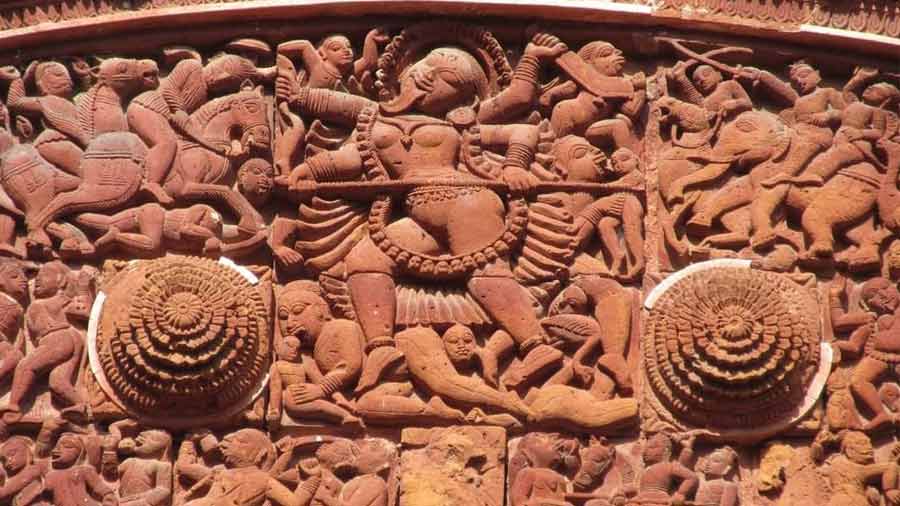If you are looking for one spot in Kolkata that is a seat of faith, your search is likely to end at the Kalighat Temple with its long queues of devotees. Over 200 years since it got its present form, the landmark Kolkata temple is undergoing renovation.
My Kolkata brings you a peek into the project as the temple complex undergoes its first major restoration since 1809.
Restoring history
The renovation aims to recreate and restore the beauty of the historic temple, taking it back to what it might have looked like in its heyday. Rather than changing any fundamentals, the objective has been to highlight its existing ethos. For this purpose, conservation architect Kalyan Chakraborty sought out artist Tamal Bhattacharya with the goal of enhancing the temple’s artwork.
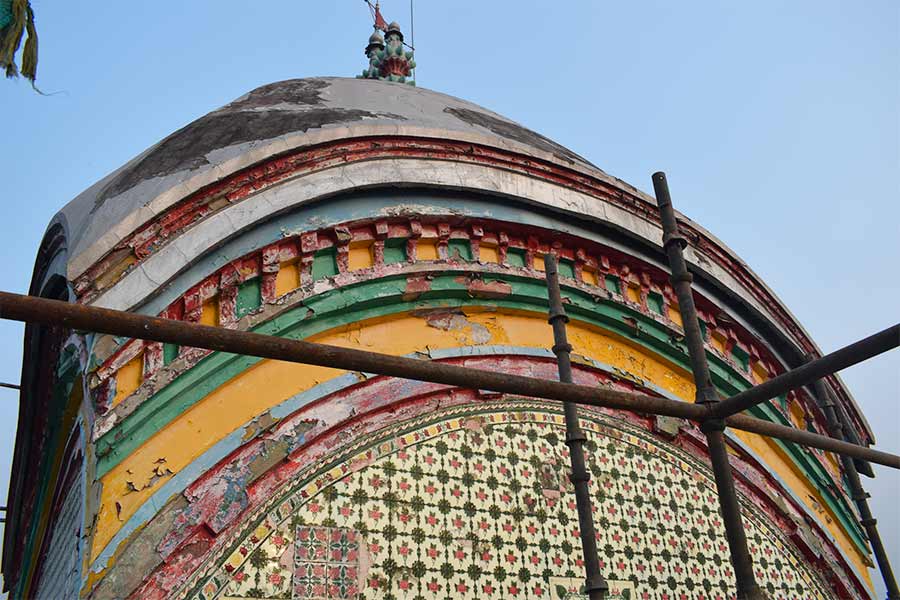
Artist Tamal Bhattacharya found delicate works of terracotta hidden under the temple’s ‘aatchala’ structure
“My emotional bond with Kalighat Temple goes back to my early childhood,” said Tamal Bhattacharya when speaking to My Kolkata about the project. “The temple has been sacred to my family for generations, and I have been deeply attached to researching and recreating its artistic side.” He spent a great deal of time inspecting the temple with Chakraborty, identifying the areas that needed to be changed. Their objective was to try and preserve as much of the temple’s original look as possible, and incorporate new designs into its existing framework.

When Bhattacharya chanced upon the nature-inspired terracotta motifs, he knew they had to be showcased in the restored structure
His work is playing a pivotal role in beautifying the temple’s aatchala architecture — a staple of temple architecture in West Bengal. The Kalighat temple shows a type of aatchala style known as the ‘arch and vault’, meaning it has the quintessential arched or chala roofs as well square bases or vault architecture. When Bhattacharya and his team began work, they weren’t aware that there was intricate terracotta work under the aatchala, which had been hidden by the structure. When he chanced upon the delicate designs comprising birds and flowers, he knew that the post-renovation temple had to showcase them in all their glory.
Creating old-world art
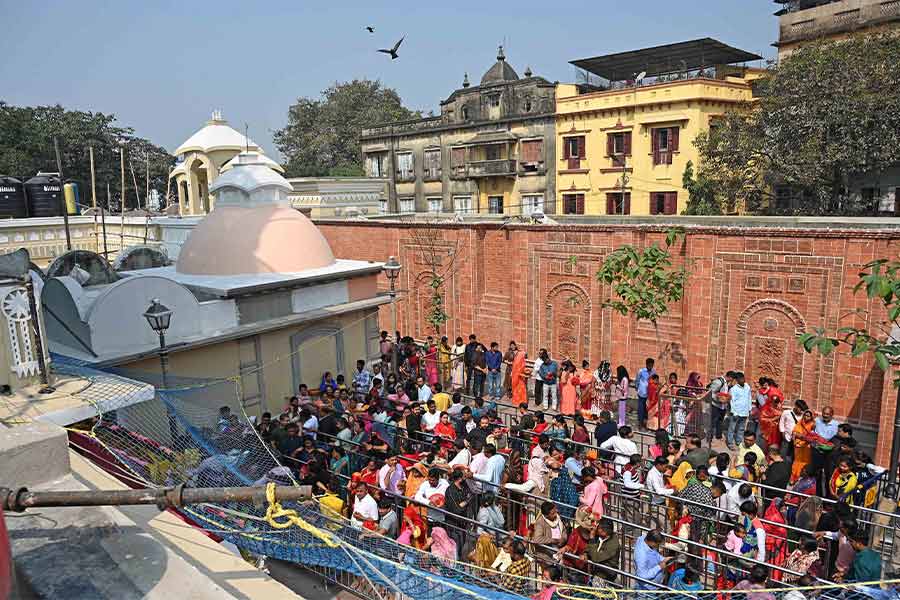
A boundary wall has been constructed to separate the temple complex from the bustling market outside, resulting in better crowd management
Many of the terracotta pieces have been destroyed by the ravages of time. “Finding a replica of these terracotta works is nearly impossible today. So, we decided to make the same motif ourselves,” said Bhattacharya, adding that he ensured that they were recreated with care in his own Studio Calyx, in Baruipur.

Finding replicas of the terracotta structures ravaged by time is almost impossible today
Bhattacharya is also working on the illustrated tiles within the complex. When the temple was initially set up, it had plain walls. The tiles came later, in order to avoid the dampening of walls, however the downside was the lack of uniformity. “The entire temple complex has 25 different types of tiles, which were chosen as per availability but haven’t been maintained properly. We will recreate a uniform look, by sticker-transfer and glazing,” he added, explaining the process.
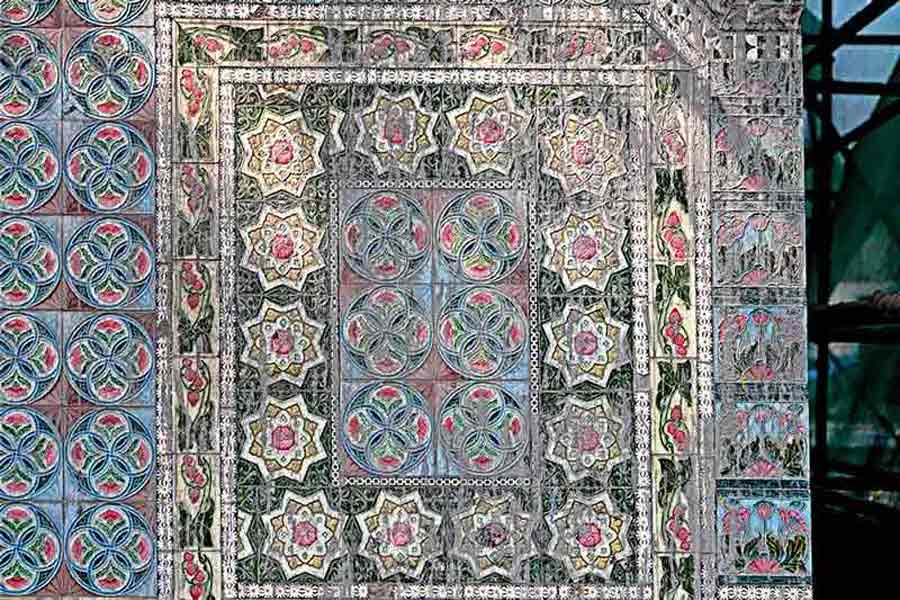
There are about 25 different types of tiles across the complex, which were added much later to protect the walls
In addition, the massive pillars have received a fresh coat of paint, and the pots at the top of the temple have been covered in gold. A new wall has also been constructed, segregating the market area from the temple in order to help manage crowds better. Students from Bishnupur, which is known for its own terracotta temples, have been roped in to adorn it with terracotta artwork.
Apart from design, the temple will also have some scientific changes, which will improve ventilation. Attention to detail is of such magnitude that even the drainage of water from belpatas has been kept in mind.
An emotional endeavour
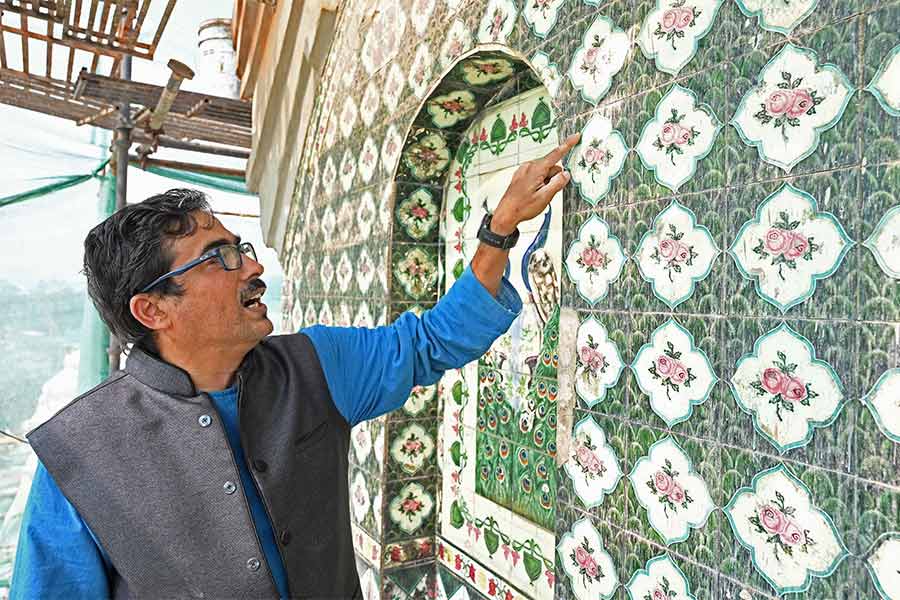
For Bhattacharya, restoring the Kalighat temple is much more than a renovation project, it is emotional
To Bhattacharya, this isn’t a simple renovation project. For him, the Kalighat Temple signifies a melting pot of the city he loves, lending it much of its personality. Many believe that ‘Kalighat’ is derived from the Bengali word, Kalikshetra, which means the hallowed homeground of Goddess Kali. For some, this resonates with Kolkata's colloquial name Kalikata, which is said to have morphed into the Anglicised Calcutta. “In a way, this city derived its name from the Kalighat Temple, and it is a huge privilege for me to give back,” he said.
The connection is also personal. “Four generations of my family — my father before me, my grandfather, and his father — have prayed here,” said the artist, adding that the process of the restoration has given him new knowledge and experiences to cherish.
